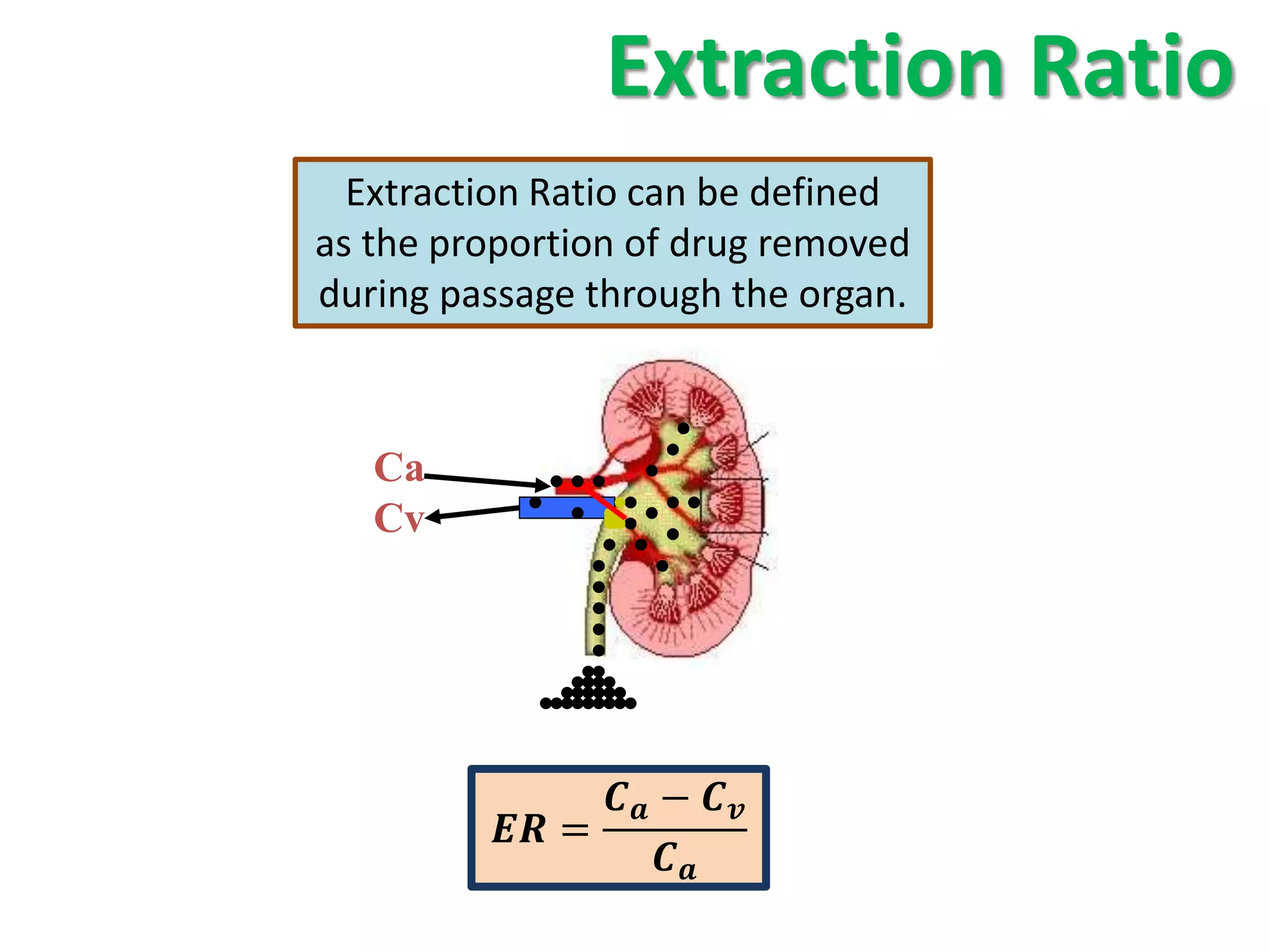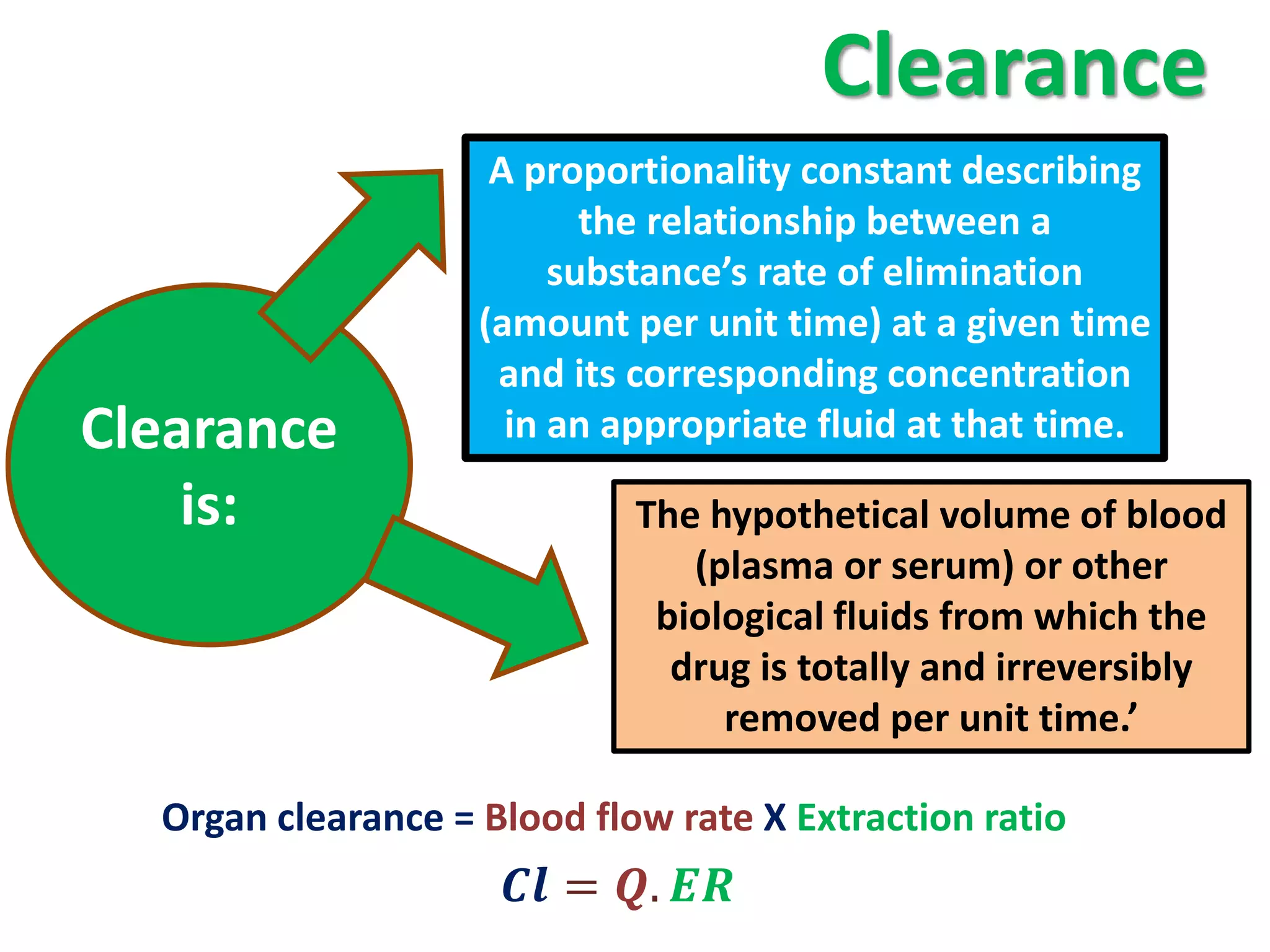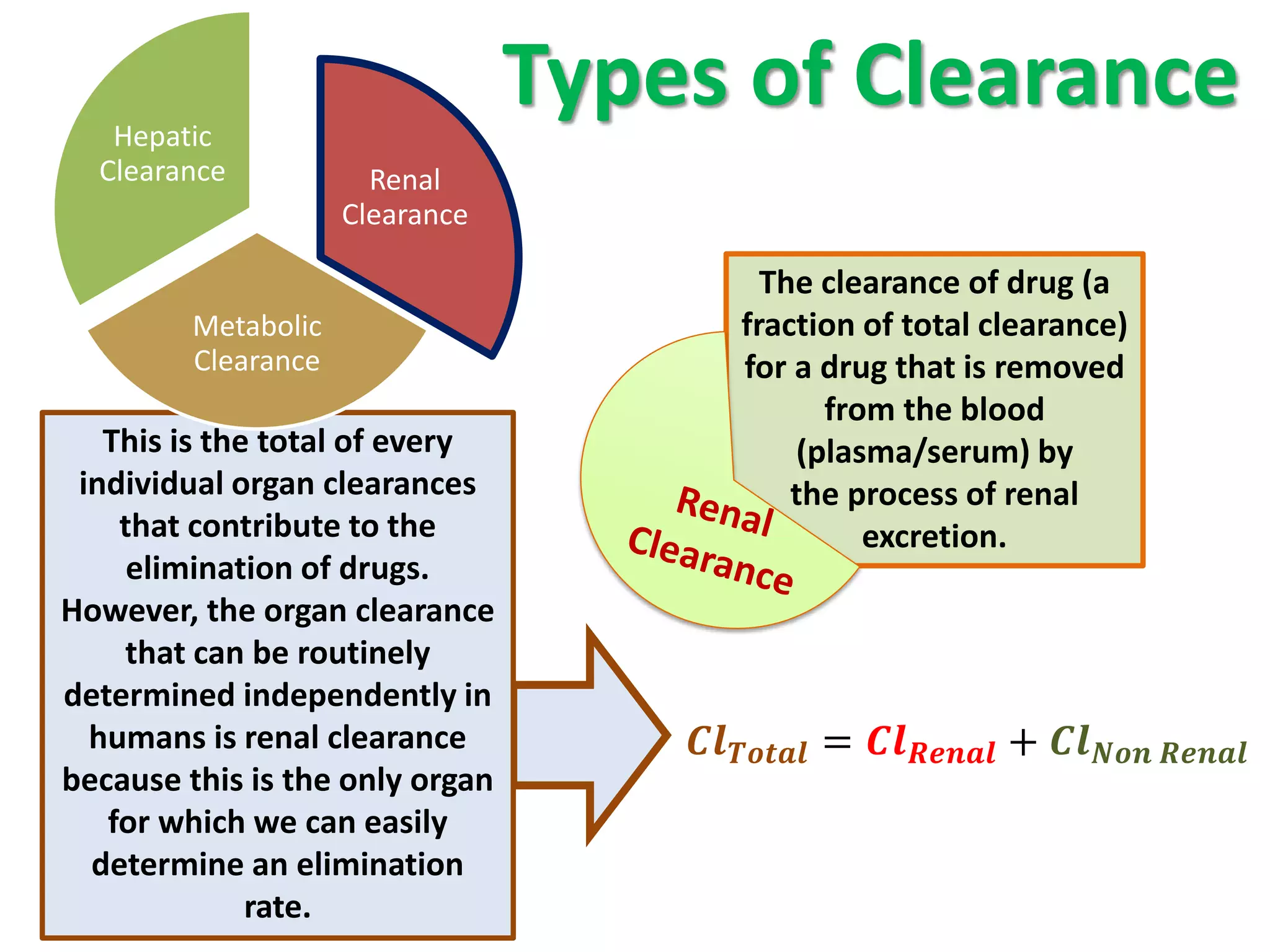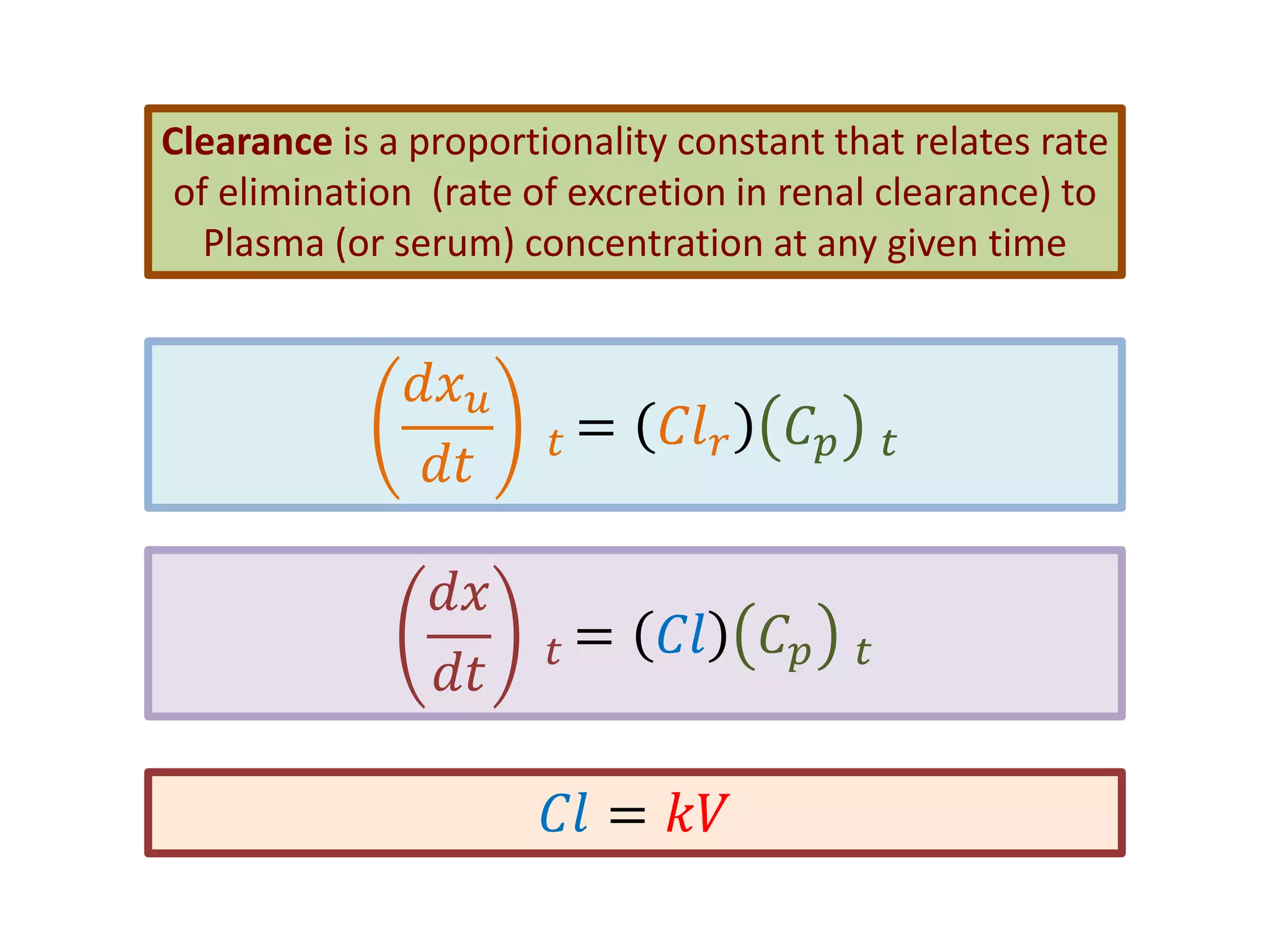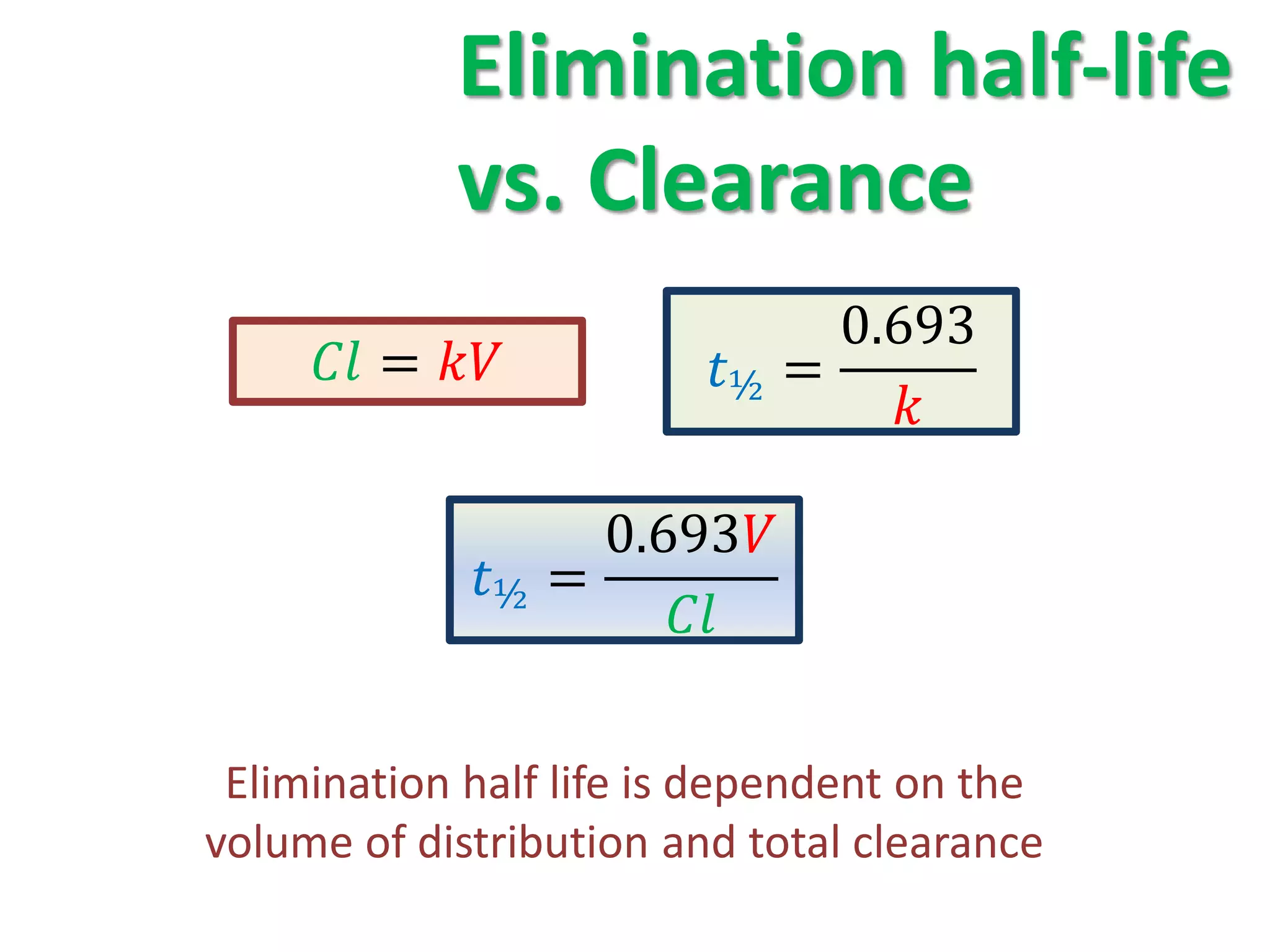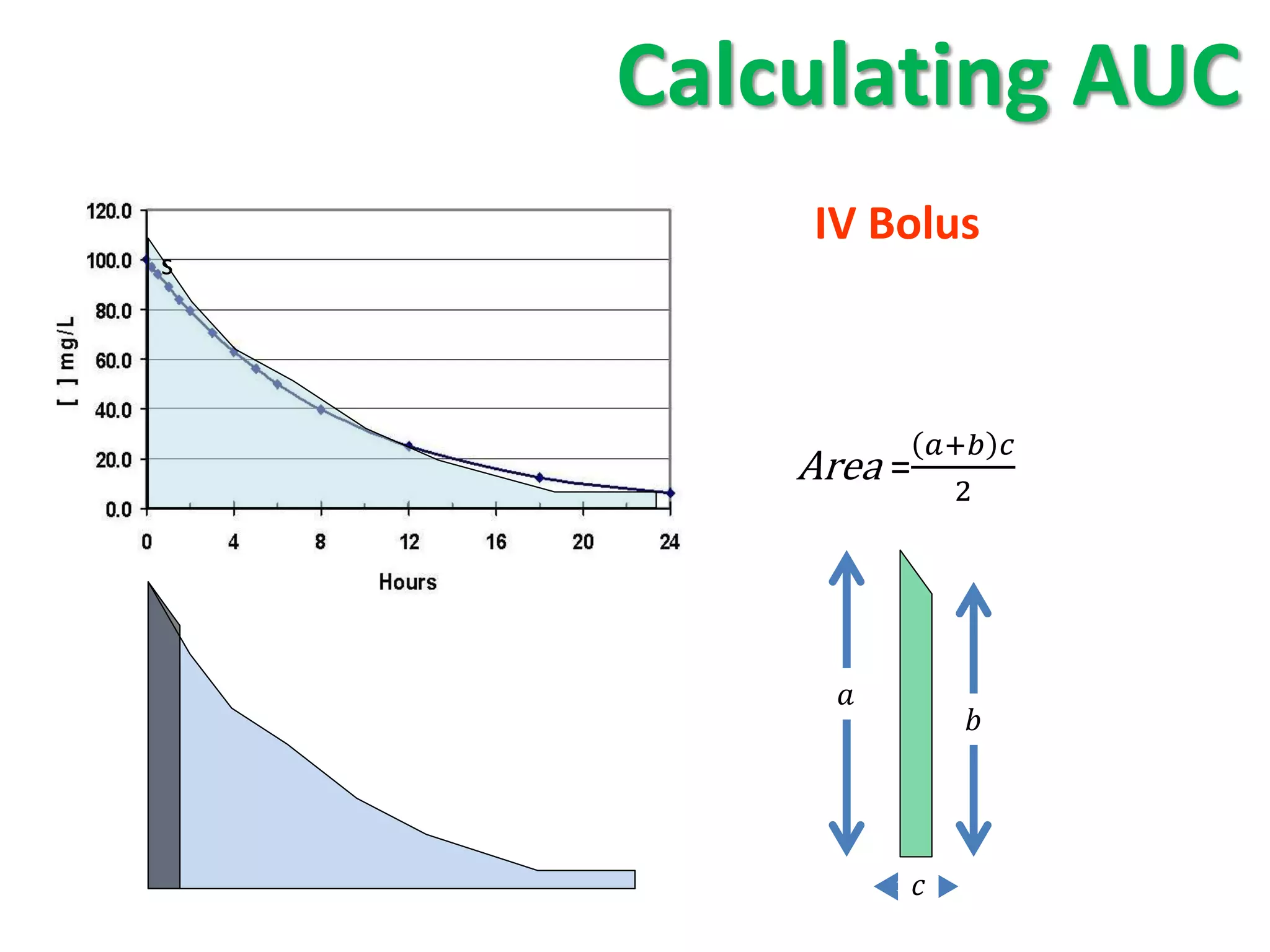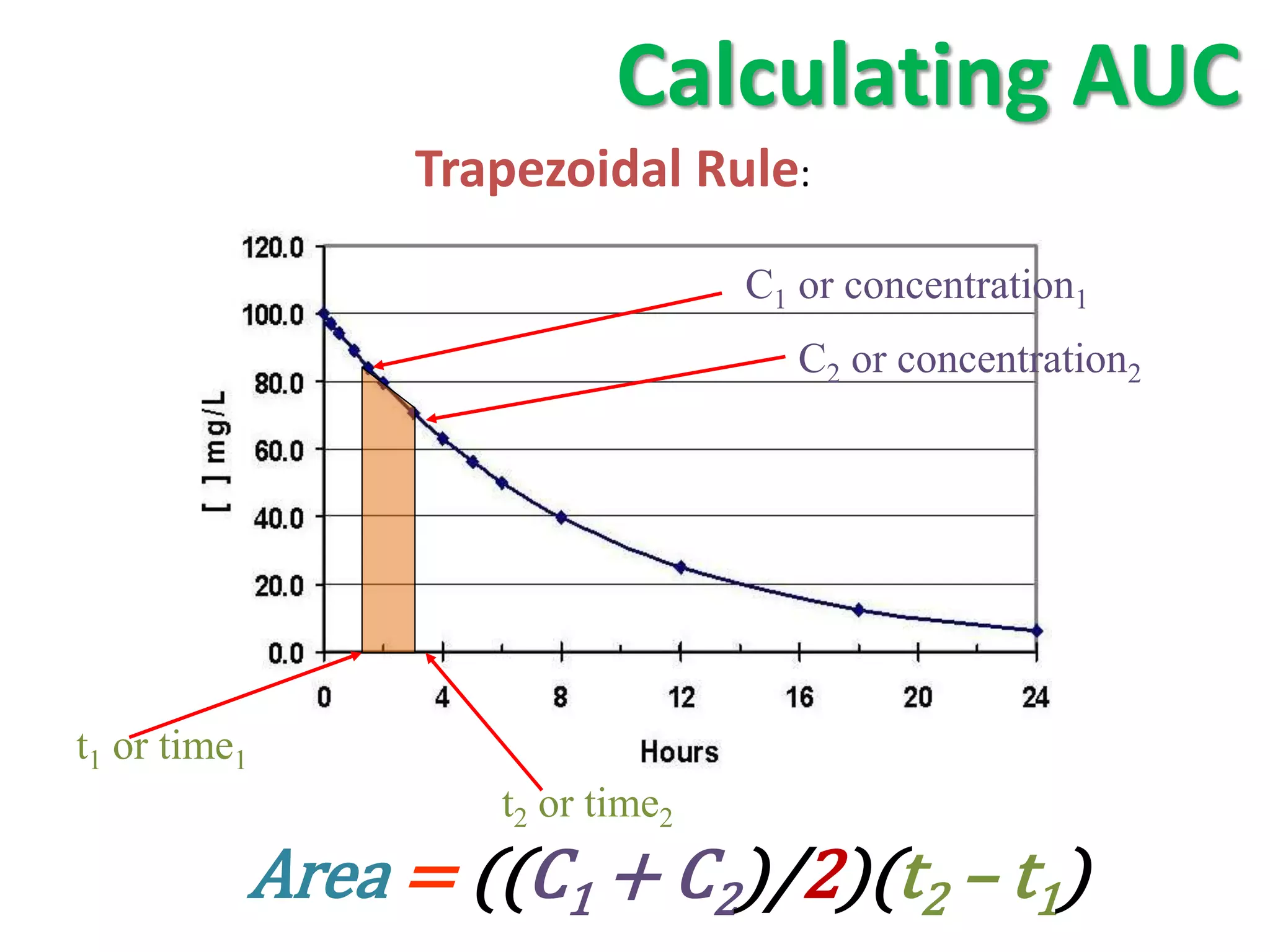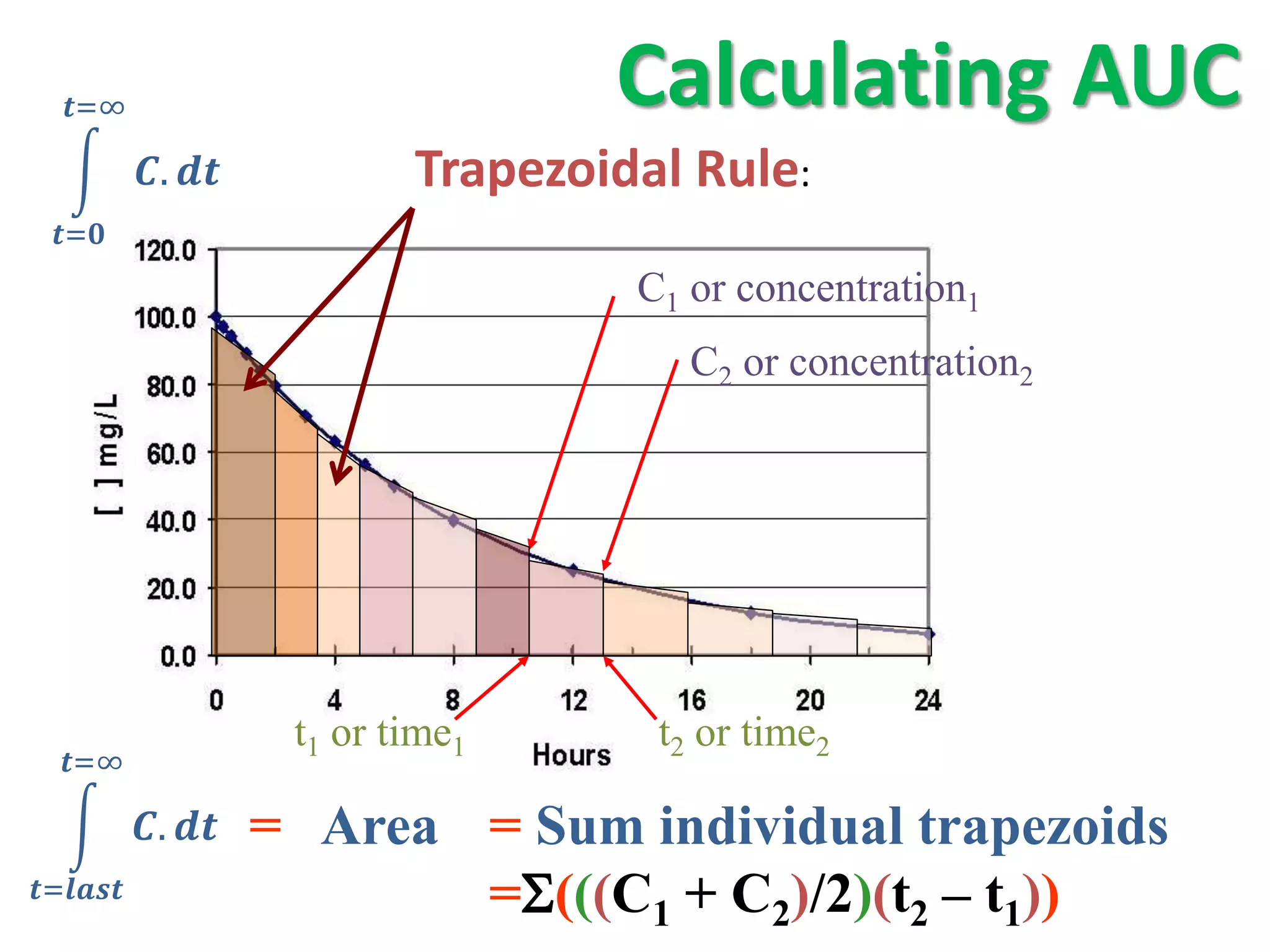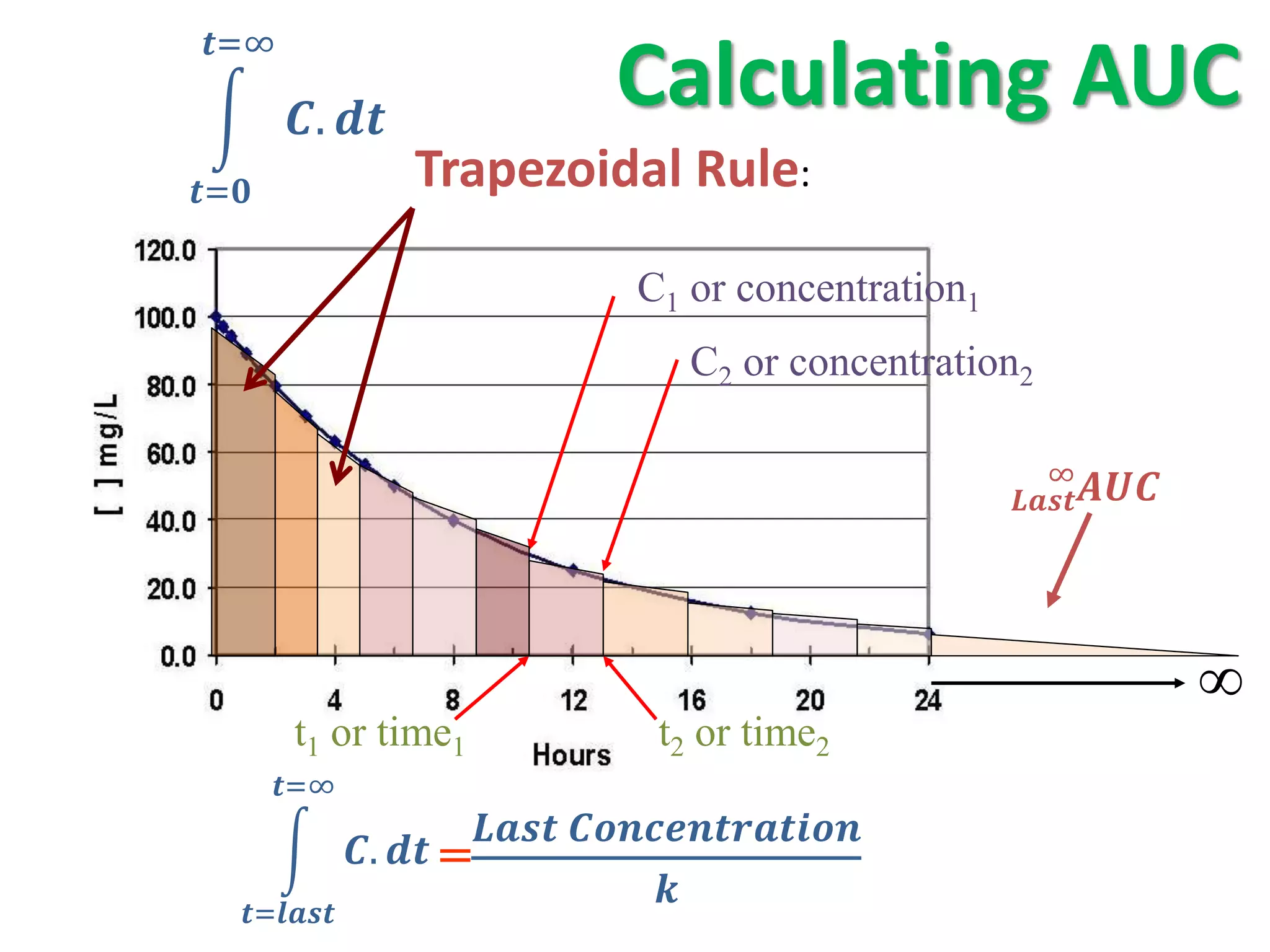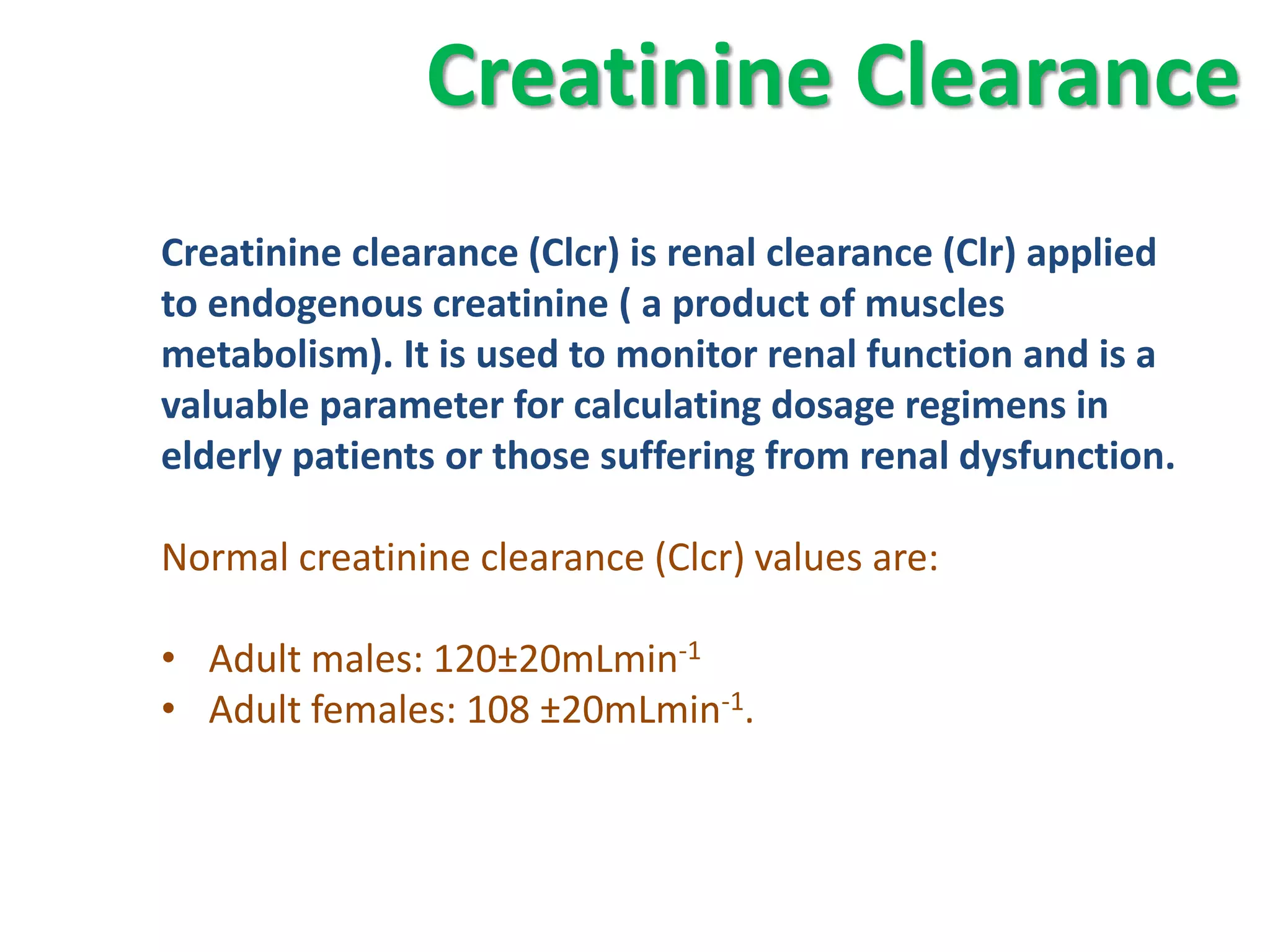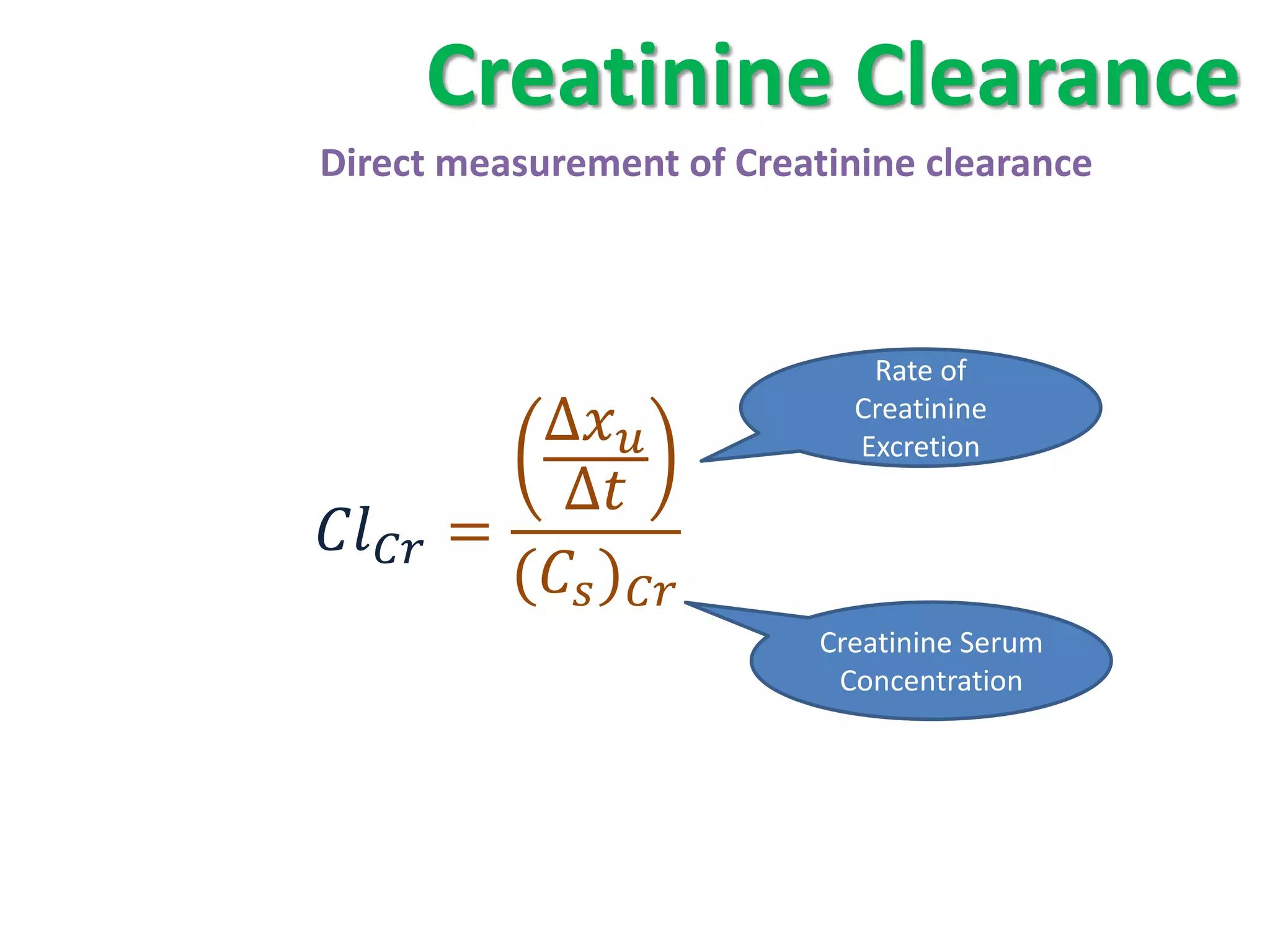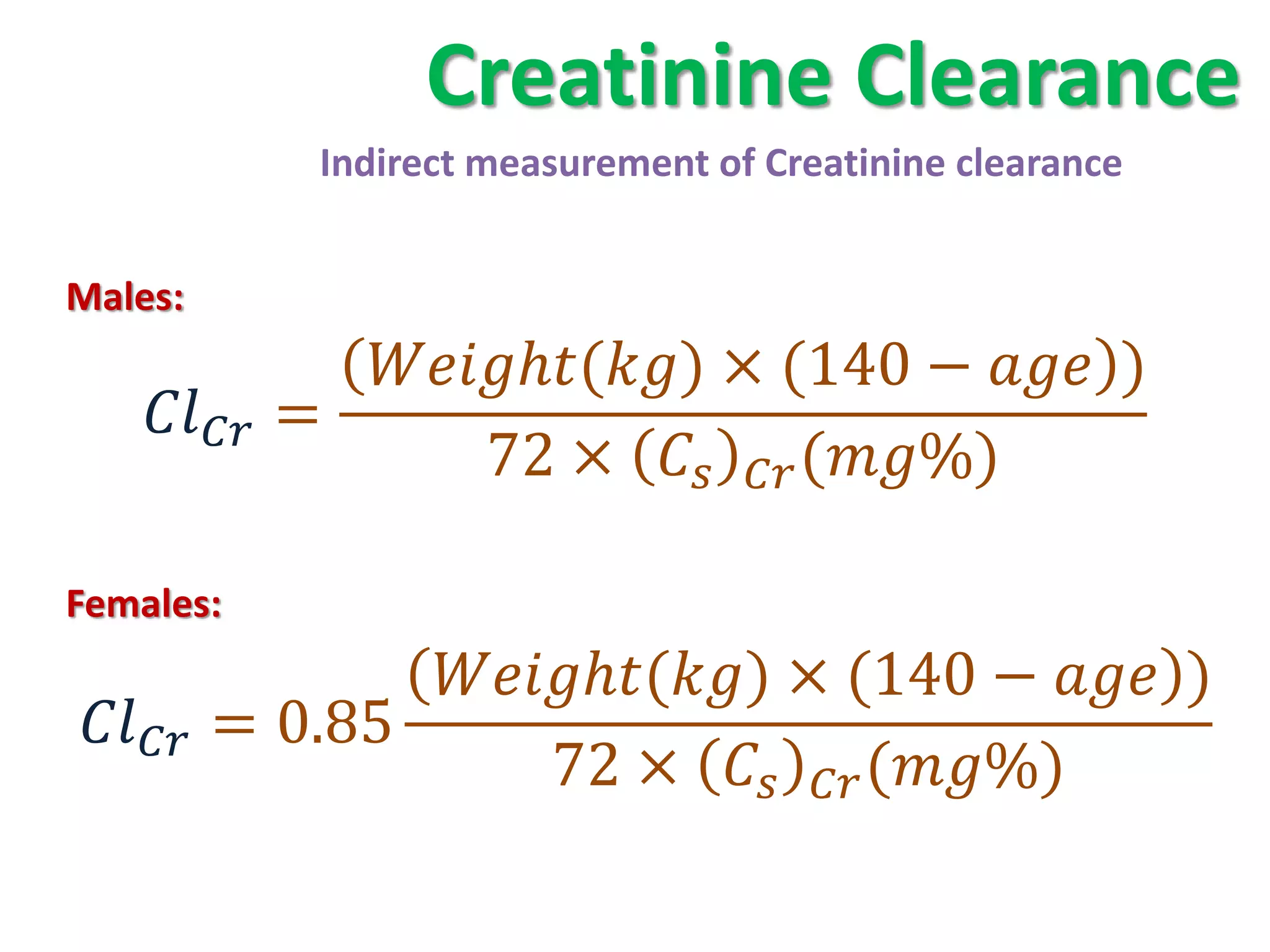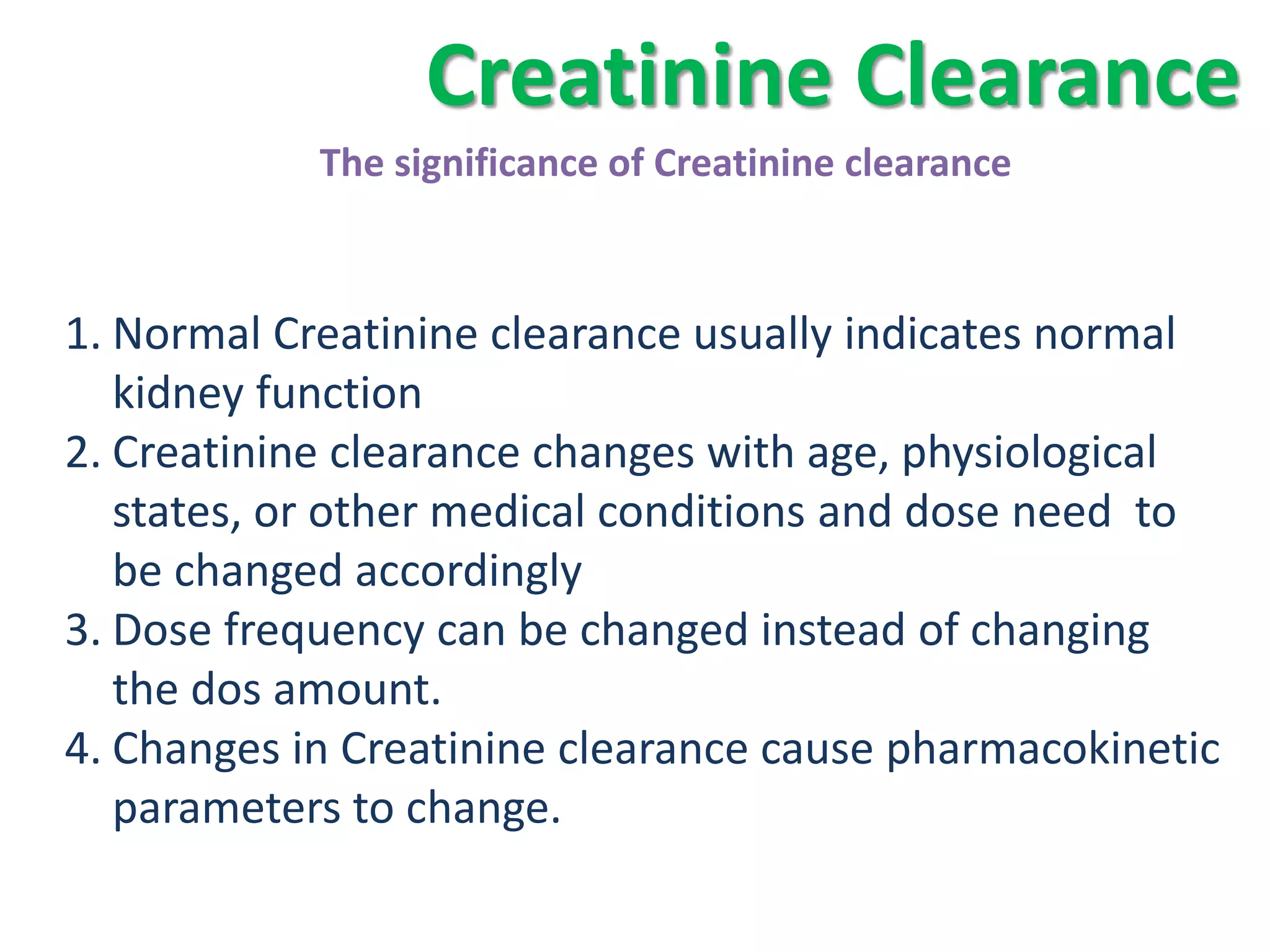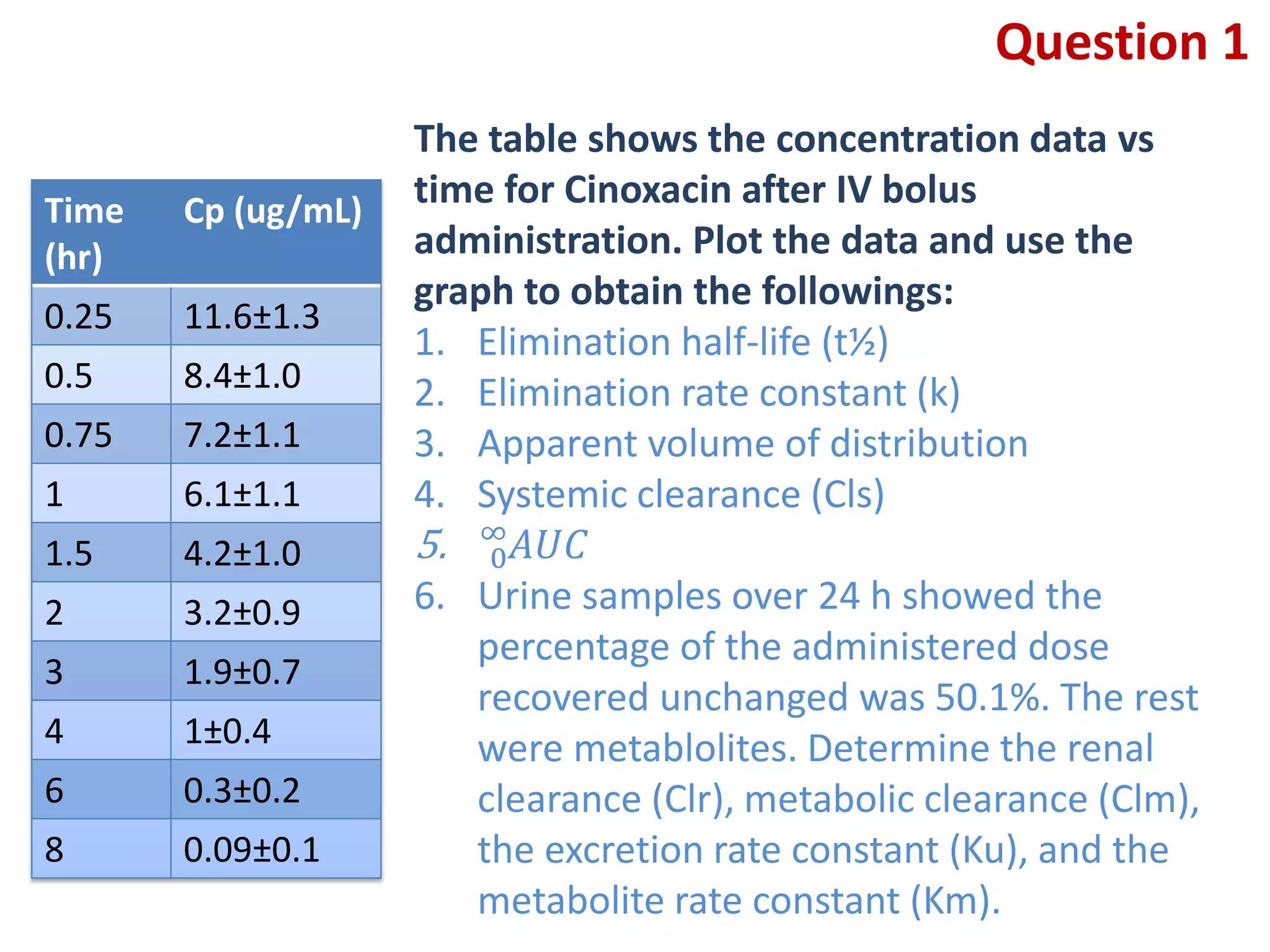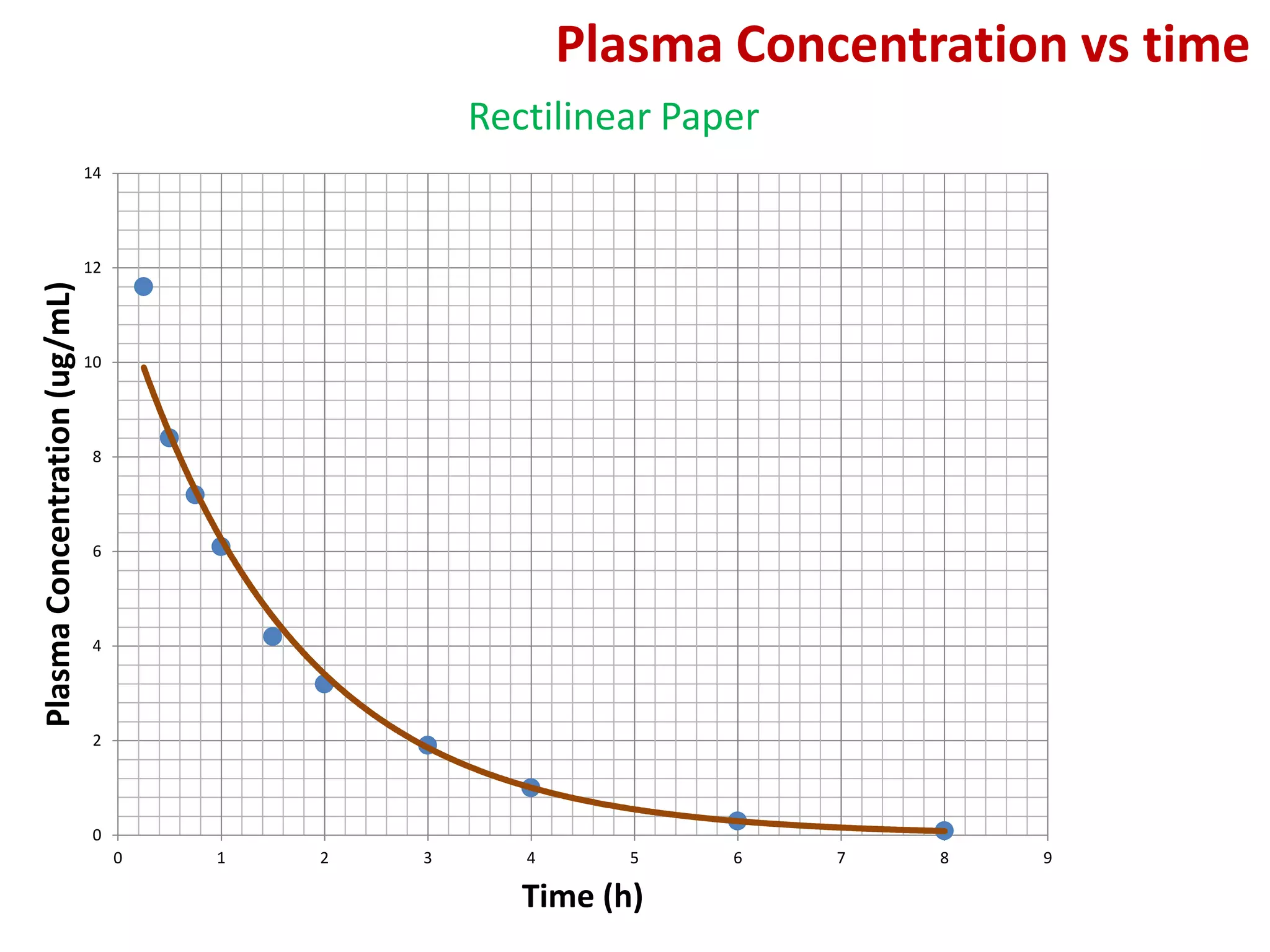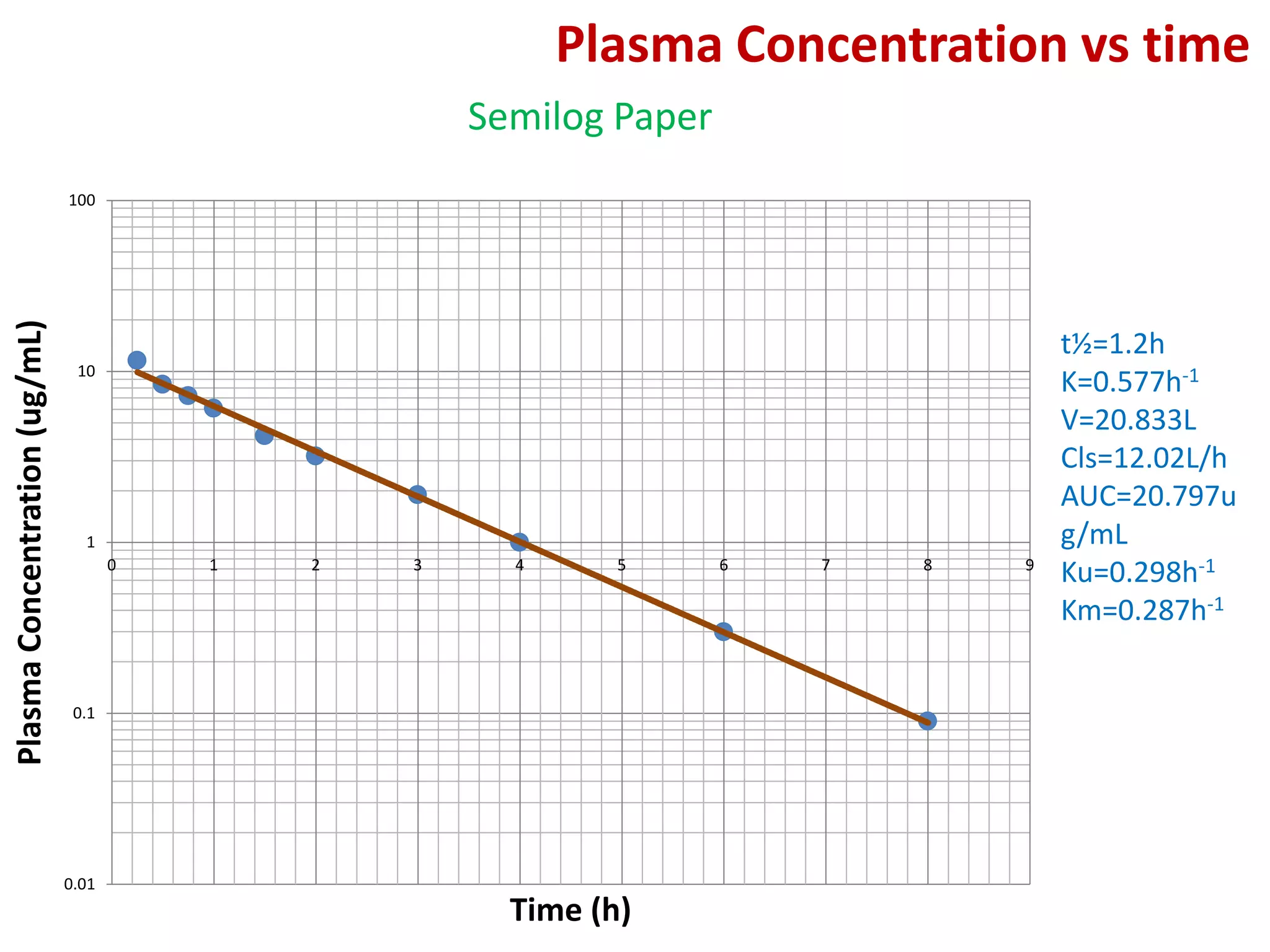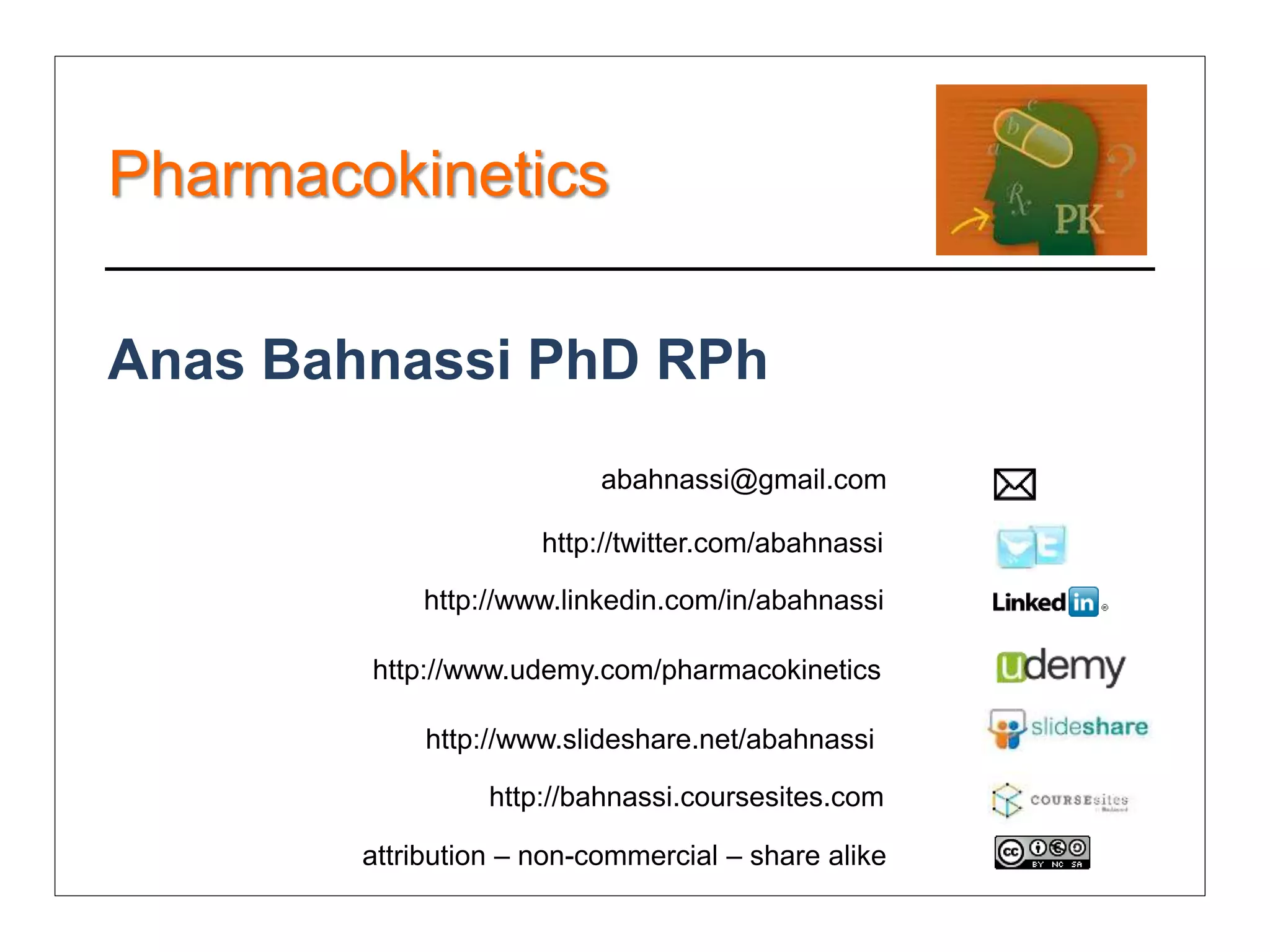This document discusses clearance concepts in pharmacokinetics. It defines clearance as the proportionality constant relating the rate of drug elimination to its concentration in blood or plasma. Clearance depends on blood flow and the extraction ratio of the clearing organ. The two main types of clearance are hepatic clearance and renal clearance. Renal clearance can be estimated by measuring creatinine clearance. The document provides equations for calculating clearance, area under the curve, and creatinine clearance and adjusting drug doses based on renal function.
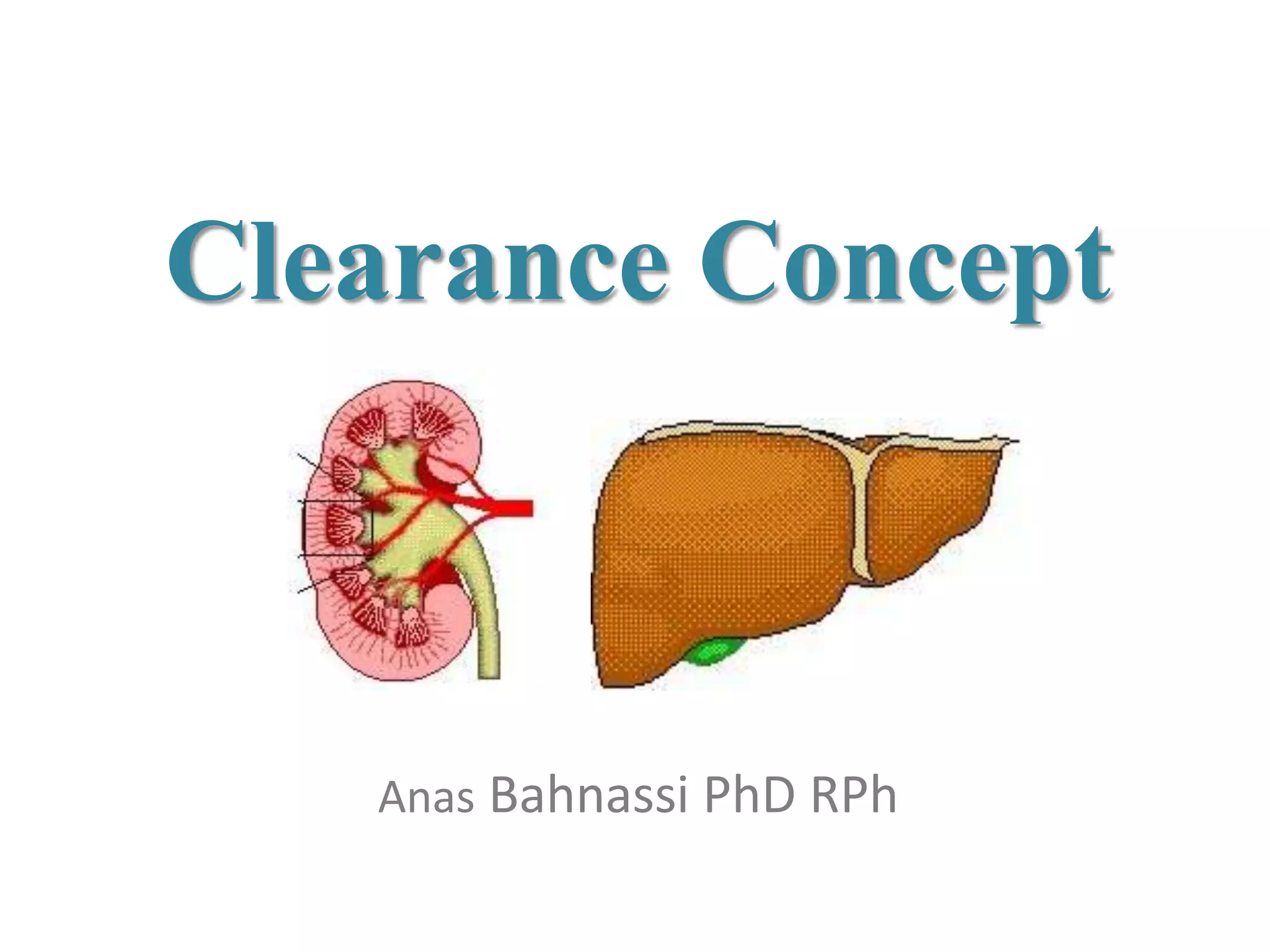
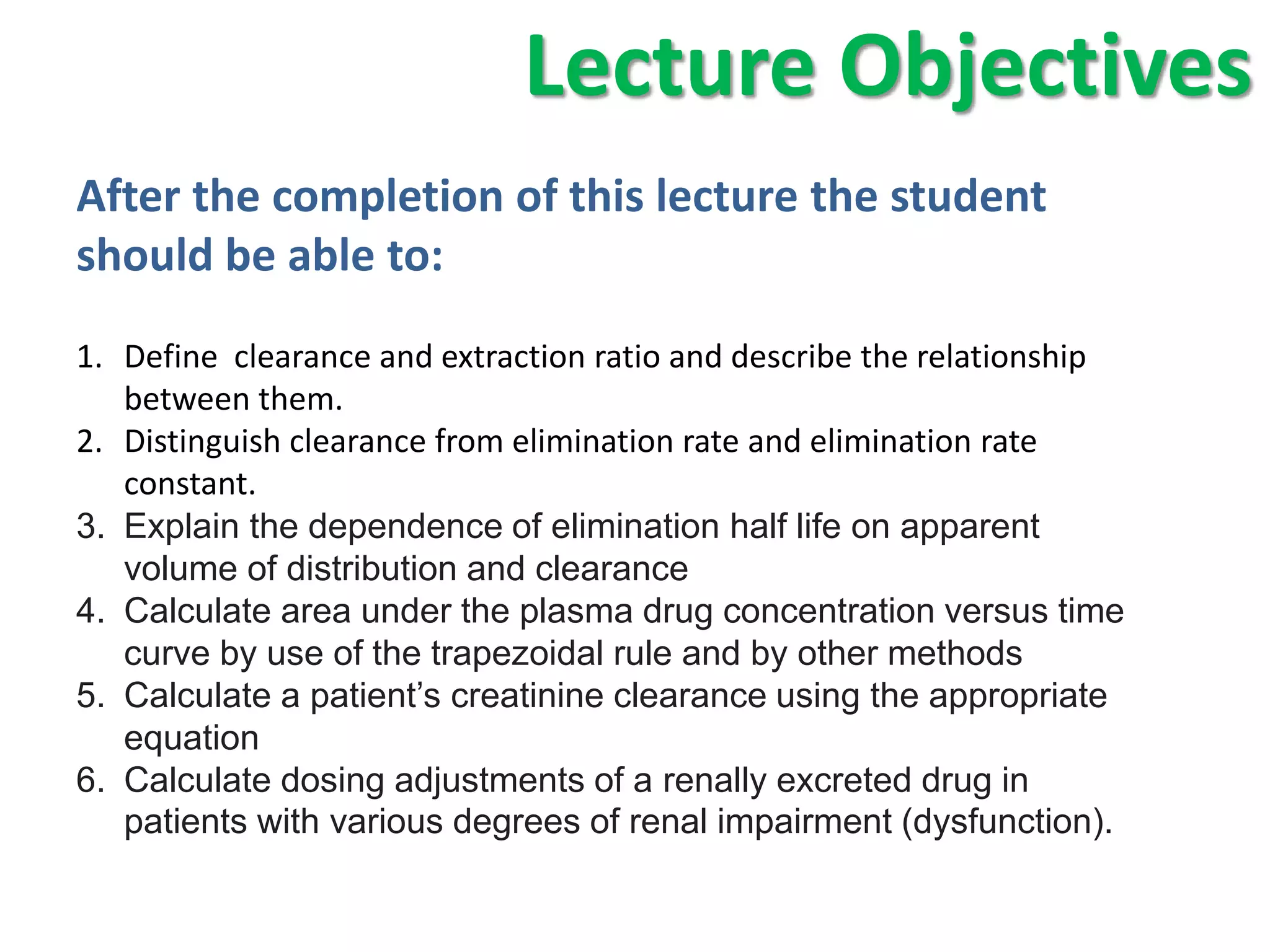
![A Physiological Approach to
Understand Clearance
Concept Site of
Action
Heart
Clearing Organ
(Pump)
(Kidney/Liver)
The blood exiting the eliminating
organ has a lower concentration
than the blood entering the organ.
The efficiency of Removal is
quantified by the Extraction Ratio
[ER].](https://image.slidesharecdn.com/clearanceconcepts-120101021736-phpapp01/75/Pharmacokinetics-Lecture-Three-3-2048.jpg)
